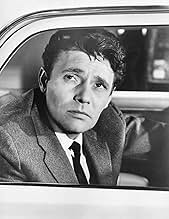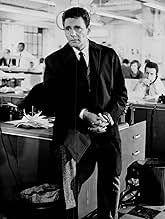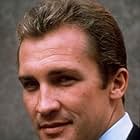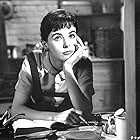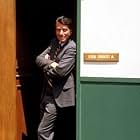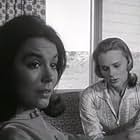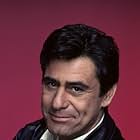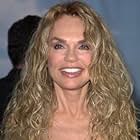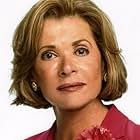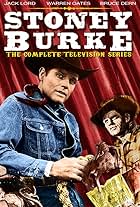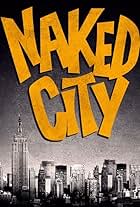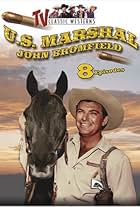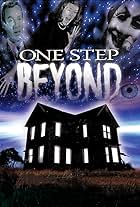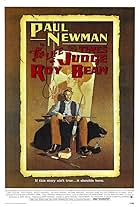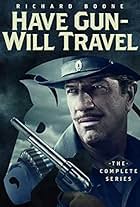Danny Taylor is an ambitious news hound for the daily New York Globe, with a knack for getting the tough stories. Lou Sheldon is his boss who tries to keep Danny out of trouble. Artie is a g... Read allDanny Taylor is an ambitious news hound for the daily New York Globe, with a knack for getting the tough stories. Lou Sheldon is his boss who tries to keep Danny out of trouble. Artie is a gregarious ever present taxi driver.Danny Taylor is an ambitious news hound for the daily New York Globe, with a knack for getting the tough stories. Lou Sheldon is his boss who tries to keep Danny out of trouble. Artie is a gregarious ever present taxi driver.
Storyline
Featured review
"The Reporter" was a very ambitious 1964 show that seemed to have the potential for greatness. Thirty-nine year old Harry Guardino played idealistic young columnist Danny Taylor and Forty-nine year old Gary Merrill was city editor Lou Sheldon. Guardino and Merrill had been terrific in an "Outer Limits" episode the previous season called "The Human Factor", where the two actors alternated playing the good guy and the bad guy, sort of like "Face/Off".
I always found Gary Merrill an interesting looking guy and a good actor. I thought he might have been good as Lt. Gerard on "The Fugitive" or as General Savage's commanding officer on "12 O'Clock High".
In addition to having two interesting (and rather expensive) series leads, "The Reporter" was filmed on location in New York City, always a promising sign for a drama series.
Jerome Weidman ("I Can Get it For You Wholesale", "Fiorello") was the creator. "The Reporter" basically had the same premise as the 1962 "Saints and Sinners" with Nick Adams and John Larkin.
Directors included Tom Gries ("Will Penny"), Stuart Rosenberg, Mark Rydell, and Paul Stanley. Writers included Weidman, Gries, Hal Lee, and George Bellak.
"The Reporter" splurged on big name and interesting guest stars: Claude Rains, Mildred Dunnock, Efrem Zimbalist, Jr., Franchot Tone, Richard Conte, Arthur Hill, Jack Lord, Nick Adams, Robert Ryan, Eddie Albert and William Shatner.
Young actors on the way up who appeared on the show included Edward Asner, Michael Conrad, Warren Oates, James Farentino, Dyan Cannon, Jessica Walter and Zohra Lampert. Brenda Vacarro had a terrific cameo as a sexy secretary who finds Guardino resistible. They should have made Vacarro a regular. Roy Thinnes was to have had a recurring role as a police detective friend of Guardino, but he was only in one or two episodes.
In the first episode, Rip Torn played an ordinary man who comes to the aid of a person being attacked, only to be seriously knifed himself. Torn had read a column of Guardino deploring a Kitty Genovese type incident. Torn calls Guardino, who spends the hour episode trying to locate him. Shirley Knight was a receptionist at the newspaper who becomes emotionally connected to Torn over the phone line. Torn and Knight were superb. I saw them several decades later in a Broadway production of a play by Horton Foote. They were still superb.
In another episode Jack Lord played a star baseball player for a NY team, whose son is kidnapped. Lord is too afraid to deliver the ransom. Guardino delivers the ransom since he looks superficially like Lord. Frank Gifford was also in the episode. The plot shows how the writers were having trouble getting their reporter hero in the center of the action. Guardino later guest starred on four "Hawaii 5-0's".
Even though I expected to like Harry Guardino's performance in this series, I didn't find it very charismatic. Other actors who started series roles in 1964 that I expected to like were Robert Lansing, Richard Crenna, and Robert Vaughn. None of those three actors disappointed me. Part of the problem was that Danny Taylor as written was young, idealistic, and inexperienced (sort of like Dr. Kildare). This wasn't a good fit for Guardino's persona. Maybe Guardino's character should have been more like Jimmy Breslin.
"The Reporter" was on CBS on Friday nights from 10 to 11 eastern time. Its competition was "12 O'Clock High" and "The Jack Paar Show." "The Reporter" was replaced in mid-season by the excellent "Slattery's People" with Richard Crenna, which moved from Monday nights.
"The Reporter" was produced by actor Keefe Brasselle's production company. There was a bit of a scandal at the time that Brasselle, who sold two other shows to CBS that year, might have gotten a sweetheart deal from president Jim Aubrey. But "The Reporter" had plenty going for it, and didn't need any shenanigans to get sold. The producers obviously were trying hard to make a good show, and almost certainly lost a ton of money on this business venture.
Harry Guardino had another series in 1971 when he was 46. He played government agent "Monty Nash". It was a syndicated 30 minute show produced by Everett Chambers ("Johnny Staccato", "Peyton Place"). The show had a good premise and some good on location photography, but a minuscule budget sank the effort. "Monty Nash" wasn't half as compelling as Chambers' "Johnny Staccato".
Guardino also played Hamilton Burger to Monte Markham's Perry Mason, in a failed 1973 effort to revive that marvelous lawyer series.
Harry Guardino starred in a 1969 CBS TV movie that was a pilot for a promising series. The movie was called "The Lonely Profession". Guardino played San Francisco private eye Lee Gordon. The writer/director of the movie was talented Douglas Heyes ("Kitten With a Whip", "Aspen", "Captains and Kings"). Douglas Heyes had himself played a private eye on radio. Heyes based the movie on his own novel. Heyes named the lead character after his friend actor Leo Gordon. As long as the show was going to be about a San Francisco private eye, Heyes should have named his hero Sam Spade; it might have made the pilot more commercial. Maybe they could even have brought back Miles Archer, Spade's old partner, from the grave. Jack Cassidy would have been a terrific Miles Archer, and Guardino and Cassidy could have made an intriguing team. Maybe the show could have been called "Spade and Archer". The executive producer of the pilot movie was the great Roy Huggins ("77 Sunset Strip", "The Outsider", "The Rockford Files"), so a resulting series might have been interesting.
The year before starring in "The Reporter" Guardino starred on Broadway in a Stephen Sondheim musical called "Anyone Can Whistle". Guardino must have been very hot at the time. His co-stars were Lee Remick and Angela Lansbury. Lee and Harry didn't get along that well according to Dorothy Kilgallen. Harry's last TV guest star role was in a "Murder, She Wrote" when he was 69, shortly before his death.
I always found Gary Merrill an interesting looking guy and a good actor. I thought he might have been good as Lt. Gerard on "The Fugitive" or as General Savage's commanding officer on "12 O'Clock High".
In addition to having two interesting (and rather expensive) series leads, "The Reporter" was filmed on location in New York City, always a promising sign for a drama series.
Jerome Weidman ("I Can Get it For You Wholesale", "Fiorello") was the creator. "The Reporter" basically had the same premise as the 1962 "Saints and Sinners" with Nick Adams and John Larkin.
Directors included Tom Gries ("Will Penny"), Stuart Rosenberg, Mark Rydell, and Paul Stanley. Writers included Weidman, Gries, Hal Lee, and George Bellak.
"The Reporter" splurged on big name and interesting guest stars: Claude Rains, Mildred Dunnock, Efrem Zimbalist, Jr., Franchot Tone, Richard Conte, Arthur Hill, Jack Lord, Nick Adams, Robert Ryan, Eddie Albert and William Shatner.
Young actors on the way up who appeared on the show included Edward Asner, Michael Conrad, Warren Oates, James Farentino, Dyan Cannon, Jessica Walter and Zohra Lampert. Brenda Vacarro had a terrific cameo as a sexy secretary who finds Guardino resistible. They should have made Vacarro a regular. Roy Thinnes was to have had a recurring role as a police detective friend of Guardino, but he was only in one or two episodes.
In the first episode, Rip Torn played an ordinary man who comes to the aid of a person being attacked, only to be seriously knifed himself. Torn had read a column of Guardino deploring a Kitty Genovese type incident. Torn calls Guardino, who spends the hour episode trying to locate him. Shirley Knight was a receptionist at the newspaper who becomes emotionally connected to Torn over the phone line. Torn and Knight were superb. I saw them several decades later in a Broadway production of a play by Horton Foote. They were still superb.
In another episode Jack Lord played a star baseball player for a NY team, whose son is kidnapped. Lord is too afraid to deliver the ransom. Guardino delivers the ransom since he looks superficially like Lord. Frank Gifford was also in the episode. The plot shows how the writers were having trouble getting their reporter hero in the center of the action. Guardino later guest starred on four "Hawaii 5-0's".
Even though I expected to like Harry Guardino's performance in this series, I didn't find it very charismatic. Other actors who started series roles in 1964 that I expected to like were Robert Lansing, Richard Crenna, and Robert Vaughn. None of those three actors disappointed me. Part of the problem was that Danny Taylor as written was young, idealistic, and inexperienced (sort of like Dr. Kildare). This wasn't a good fit for Guardino's persona. Maybe Guardino's character should have been more like Jimmy Breslin.
"The Reporter" was on CBS on Friday nights from 10 to 11 eastern time. Its competition was "12 O'Clock High" and "The Jack Paar Show." "The Reporter" was replaced in mid-season by the excellent "Slattery's People" with Richard Crenna, which moved from Monday nights.
"The Reporter" was produced by actor Keefe Brasselle's production company. There was a bit of a scandal at the time that Brasselle, who sold two other shows to CBS that year, might have gotten a sweetheart deal from president Jim Aubrey. But "The Reporter" had plenty going for it, and didn't need any shenanigans to get sold. The producers obviously were trying hard to make a good show, and almost certainly lost a ton of money on this business venture.
Harry Guardino had another series in 1971 when he was 46. He played government agent "Monty Nash". It was a syndicated 30 minute show produced by Everett Chambers ("Johnny Staccato", "Peyton Place"). The show had a good premise and some good on location photography, but a minuscule budget sank the effort. "Monty Nash" wasn't half as compelling as Chambers' "Johnny Staccato".
Guardino also played Hamilton Burger to Monte Markham's Perry Mason, in a failed 1973 effort to revive that marvelous lawyer series.
Harry Guardino starred in a 1969 CBS TV movie that was a pilot for a promising series. The movie was called "The Lonely Profession". Guardino played San Francisco private eye Lee Gordon. The writer/director of the movie was talented Douglas Heyes ("Kitten With a Whip", "Aspen", "Captains and Kings"). Douglas Heyes had himself played a private eye on radio. Heyes based the movie on his own novel. Heyes named the lead character after his friend actor Leo Gordon. As long as the show was going to be about a San Francisco private eye, Heyes should have named his hero Sam Spade; it might have made the pilot more commercial. Maybe they could even have brought back Miles Archer, Spade's old partner, from the grave. Jack Cassidy would have been a terrific Miles Archer, and Guardino and Cassidy could have made an intriguing team. Maybe the show could have been called "Spade and Archer". The executive producer of the pilot movie was the great Roy Huggins ("77 Sunset Strip", "The Outsider", "The Rockford Files"), so a resulting series might have been interesting.
The year before starring in "The Reporter" Guardino starred on Broadway in a Stephen Sondheim musical called "Anyone Can Whistle". Guardino must have been very hot at the time. His co-stars were Lee Remick and Angela Lansbury. Lee and Harry didn't get along that well according to Dorothy Kilgallen. Harry's last TV guest star role was in a "Murder, She Wrote" when he was 69, shortly before his death.
- Cheyenne-Bodie
- Sep 8, 2008
- Permalink
Details
- Runtime1 hour
- Color
- Sound mix
- Aspect ratio
- 1.33 : 1
Contribute to this page
Suggest an edit or add missing content



